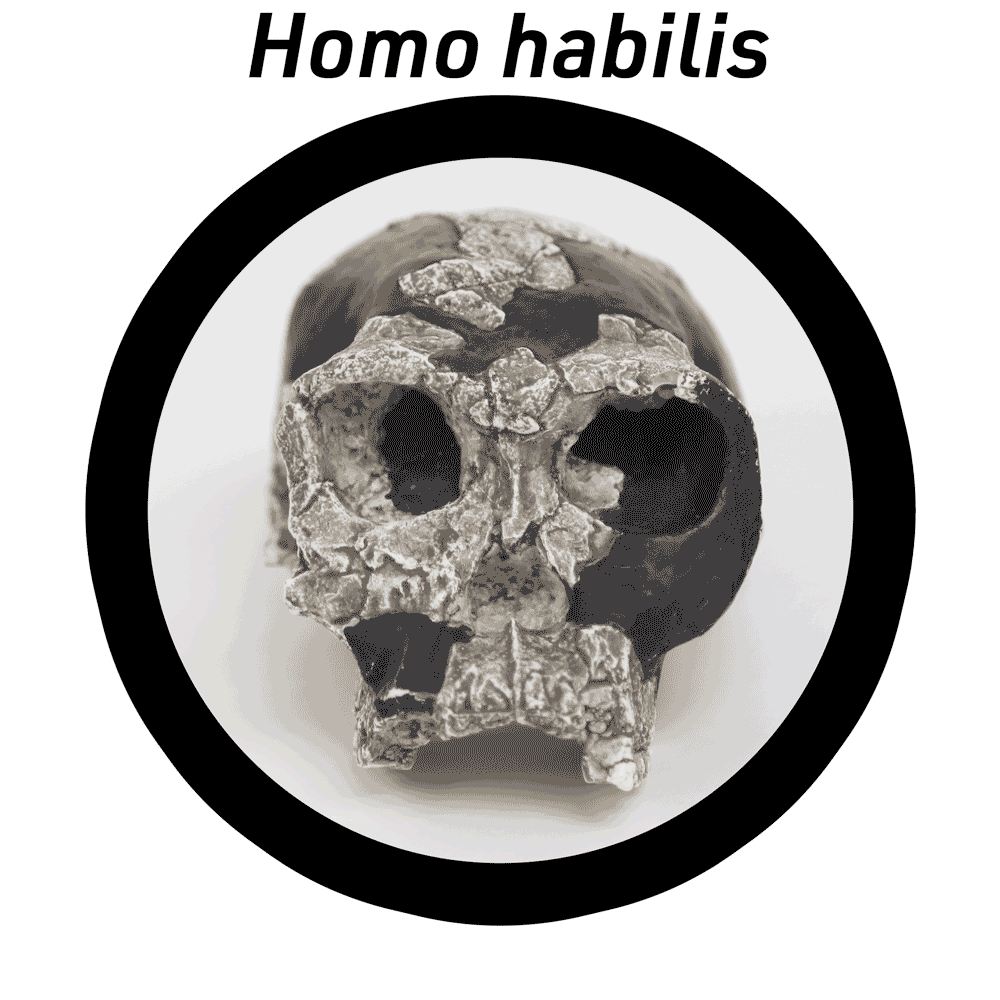Virtual lab: Homo habilis crania
Louis Leakey, Phillip Tobias, and John Napier in 1964 determined that some of the fossils from Olduvai Gorge represent a population with features of humans and also some features of Australopithecus. They named this species, Homo habilis. Later, other researchers recovered similar fossils from the Lake Turkana area. Today we recognize H. habilis fossils spanning from around 1.9 million years ago to 1.65 million years ago.

This virtual lab includes two crania of H. habilis together with a cranium of a modern human and the Sts 5 cranium of Australopithecus africanus for comparison. The two H. habilis fossils are KNM-ER 1813 from Koobi Fora, Kenya and OH 24 from Olduvai Gorge, Tanzania.
These two fossil H. habilis crania are the most complete known for this species. In this virtual lab, as you compare these crania consider the following:
- What features make these two H. habilis skulls more similar to the modern human than to Sts 5?
- Considering what you know about the variation in Au. africanus, could these two H. habilis skulls fit within the variation of that species?
Materials in this lab
- The original KNM-ER 1813 cranium is curated at the Nairobi National Museum, Nairobi, Kenya. The model in this virtual lab is based upon data from a cast in the Biological Anthropology collection at UW-Madison. A high-quality 3D scans of this fossil is available from AfricanFossils.org. That model is compatible with 3D printing and classroom use.
- The original OH 24 fossil cranium is curated at the National Museum and House of Culture, Dar es Salaam, Tanzania. The model in this virtual lab is based upon data from a cast in the Biological Anthropology collection at UW-Madison.
- The original Sts 5 fossil is curated at the Ditsong Museum of Natural History in Pretoria, South Africa. The model in this virtual lab is based upon a data from a cast in the Biological Anthropology collection of UW-Madison.
- The model of the human calvaria is based on an anatomical model created by Hannah Newey. The model is available on Sketchfab with a Creative Commons Non-Commercial Share-alike (CC-BY-NC-SA) license. I reduced the polygon count of the model for this virtual lab.
Back to full list of virtual labs